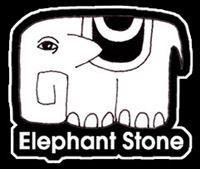Wolverine

I had, like most kids, enjoyed comics, but outside of a Spider-Man, Superman, Batman or Hulk, I kinda just let comics pass me by. My mom would occasionally let me pick one up here and there. I mostly remember those being Marvel Team-Ups. I had an issue where Spidey and The Beast teamed up. At the time, I had no idea who The Beast was. As far as I was concerned, he was big, blue and had claws, so he had to be the bad guy. Later, I found out who The Beast was and discovered that, much like the majority of citizens of the Marvel Universe, I was a Mutant Bigot.



Then I got older and found comics better than this.
Reading Wolverine for the first time in 1988 - even though the book had been published in 1982 - I was completely unaware of the impact Miller had already had on the comic industry. By this point, he had completely revolutionized Batman with his Year One story and The Dark Knight Returns mini-series, neither of which I had discovered yet, and did not know of his work on Daredevil. When I finally did read those, I could not explain properly just how let down and disappointed I felt in seeing Miller's art in DKR compared to the work I fell in love with in Wolverine. To a very ignorant kid, it was such a drastic change in styles, I just assumed Miller suffered a stroke of some sort and couldn't draw anymore. I was heartbroken. As for Claremont, I stuck with him. I remained a loyal X-Men reader until he got booted off the book. It never seemed right to me after that, and outside of a few dips back into the stream, I never fully immersed myself back into the mutant waters until Grant Morrison wrote the book in 2001.
Claremont even made a couple returns, but he'd completely given in to his indulgences and would choke the life out of his comics with his excessive dialogue, narration and thought balloons. But to see Miller's fine, beautiful rendering in Wolverine to the gritty, sloppy mess that was Dark Knight, I just didn't understand it. That wasn't art. That's not what I had learned about art. Obviously, within a handful of years, I figured out the true meaning of "style" and learned not only to accept different ones, but also to love and embrace them as well. Miller remains an all-time favorite artist in my mind, but not for his early work, rather the later style he adopted to do Sin City and beyond. Which brings me to the distorted nostalgia portion of this clunker of a review.

Claremont is at his prime, his use of dialogue, exposition and thought balloons and narration captions are all kept at the minimum he's comfortable with. He allows Miller's art to breathe and move on its own. Claremont knows he's working with one of the best sequential storytellers in the business and lets him work his magic.
However, knowing what I know now about comics and how the sausage is made, I realize that the art that I fell in love with is mostly the responsibility of Joe Rubenstein, the book's inker. Apparently the style that Miller started with DKR and refined with Sin City is how he drew comics back then as well, relying on the inkers to do the heavy lifting and "finish" the art. Rubenstein has a classic, slick style to his inks, and brought that to Miller's roughs, the same way Klaus Janson heavily influenced the look and feel of Miller's Daredevil run. Miller loves his shadows and the energy behind his art is due to his fluid and loose style. Some of that peeks through in the course of the story, but it's mostly Rubenstein giving Miller's pencil lines a polish that I don't think he's ever had since. Also, of course also knowing what I know now, Miller was most likely drunk.












